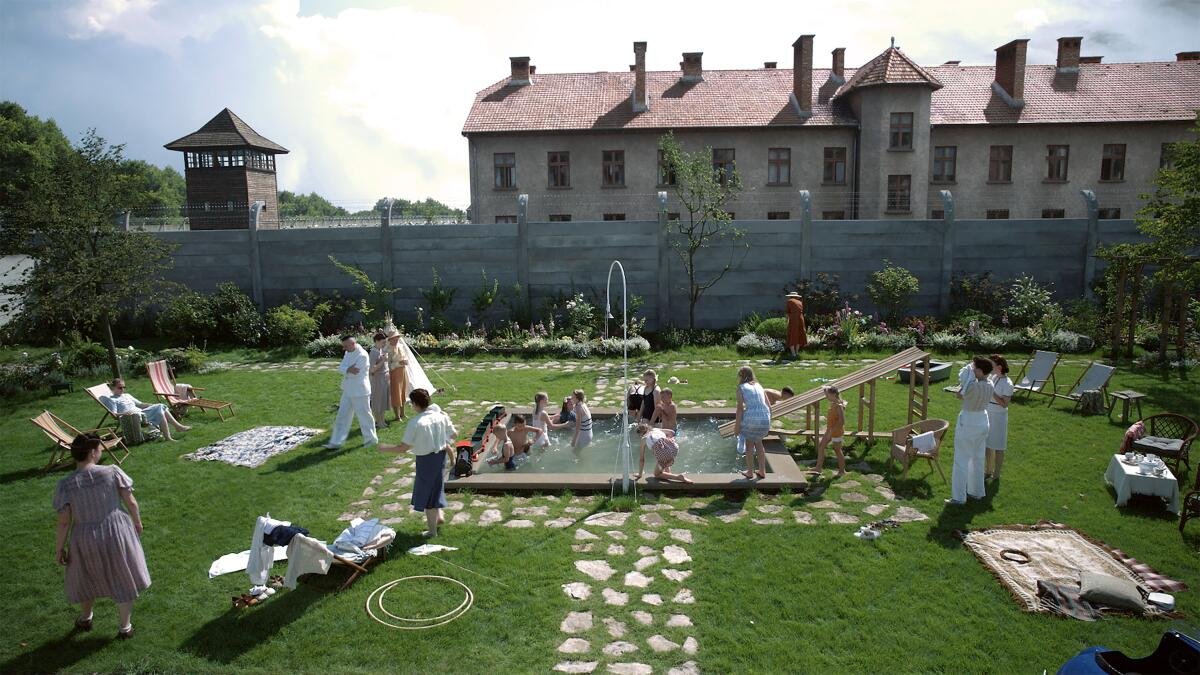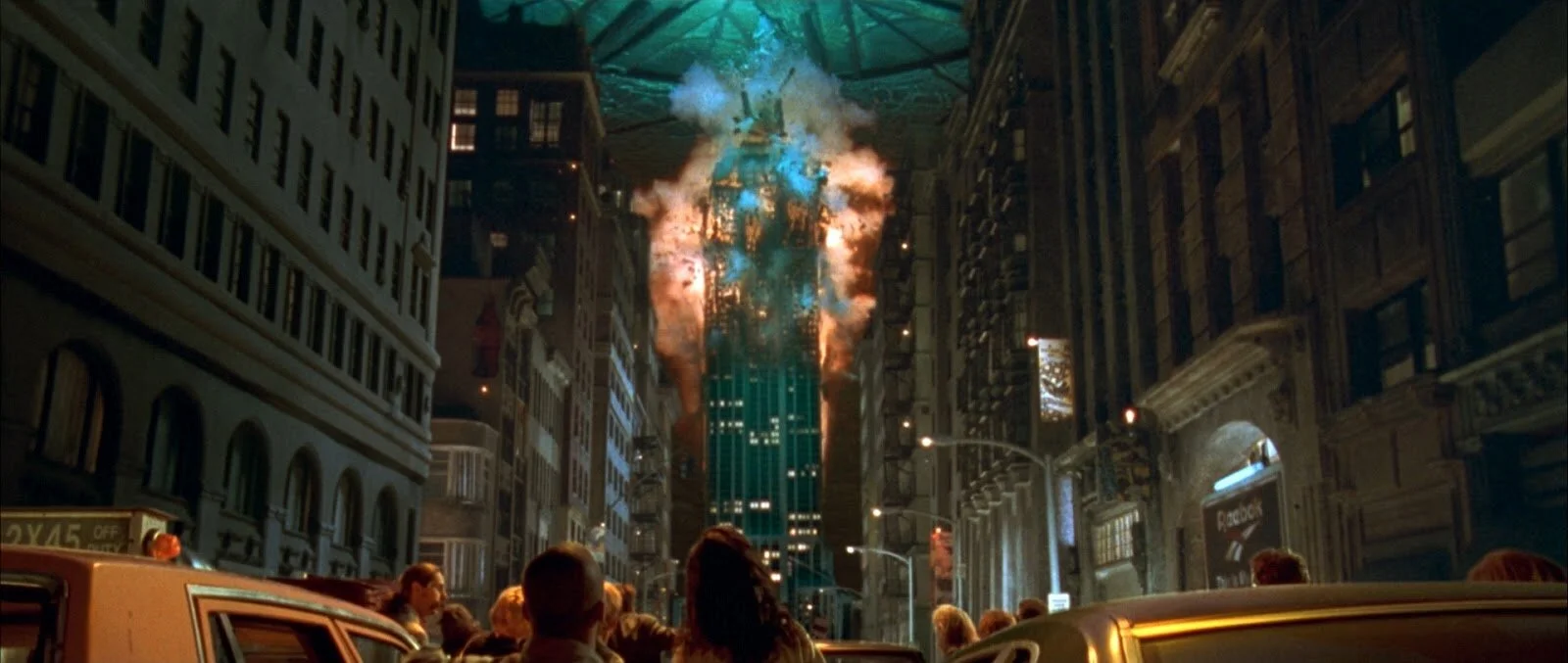Genocide Just Over the Fence: Defamiliarization in Jonathan Glazer's The Zone of Interest (2023)
The Zone of Interest is like an art installation about what exists just outside the frame. It’s the latest film from Jonathan Glazer, whose limited catalogue of intriguing films (Sexy Beast, Birth, Under the Skin) has made him a favourite among cinephiles. The Zone of Interest is about the Holocaust and Auschwitz without being about the Holocaust and Auschwitz directly. Not that Glazer hides the fact that his film follows the domestic life of Auschwitz commandant Rudolf Höss, played here by Christian Friedel. But we never go inside the camp. We never see the victims of this genocide. Rather we watch the lives of the people who commit it.
In a way, this approach to the subject has been done before in the noteworthy HBO television film, Conspiracy (2001), which focuses solely on the Wannsee Conference, a boardroom meeting that would outline and give birth to Hitler’s “Final Solution.” However, The Zone of Interest differs in that it is all about the mundane aspects of evil people committing unspeakable horrors just outside the frame.
We observe Höss and his family, notably his wife Hedwig, played by the remarkable Sandra Hüller, in and around their home, which sits right beyond the fence to the camp. They all act like they’ve created a picturesque life with a beautiful garden and even a little wading pool for the kids. His wife talks about it as an idyllic homestead for raising children. They never comment on the trains passing in the background or the constant presence of a smokestack from the crematoria looming just over their fence. They ignore it, but the film is all about establishing the surrounding context, which then forms a clear juxtaposition between this vision of domestic bliss and the backdrop of hell on earth.
This isn’t a film that hides the Holocaust. Rather it defamiliarizes it, attacking it from a different angle, because it ultimately believes that art can only gesture at something as overwhelmingly evil as the Holocaust, never truly capturing its reality. This thinking became an entire body of thought after the war, especially within Jewish circles, and is perhaps most notably embodied by Claude Lanzmann’s Shoah. In its exploration of the history solely through interviews and contemporary footage, Shoah sets the Holocaust up as an epoch-defining evil that should never be depicted on screen. The Zone of Interest incorporates aspects of such thinking and the “via negativa,” while clearly still being a movie about the Holocaust with many atrocities, or their resulting actions, in the margins of the frame. It simply reframes those atrocities as naturalized within the lives of its characters, and committed out of sight of so-called respectable people.
It’s interesting to compare the film to László Nemes’s Son of Saul, which is as maximalist as The Zone of Interest is minimalist. Both films seem to come from the same understanding that the Holocaust is an unknowable evil that art can only gesture at and never truly convey. The Zone of Interest explores the Holocaust through the lives of those who perpetrated it. Notably, it refuses a single close-up throughout the film.
Close-ups are the ultimate tool of empathy. If we could stare into the eyes of Sandra Hüller, the thinking goes, surely we would start to sympathize with her, even a tiny bit, just through the sheer power of cinema. We’ve been conditioned to do such a thing, no matter how much a movie might convey a character as evil. It’s the subconscious effect of over 100 years of editing form and function—perhaps an even deeper human response from infancy, when faces of parents are our windows into the world. Glazer does not want to risk that, so he holds back, observes, watches with curiosity. The effect is meant to disorient us through the contradictions on screen and in the formal approach. Mica Levi’s ambient, nightmarish score, similar to her work for Glazer on Under the Skin, brings this disorientation to the fore. It’s like hearing a sound from hell.
Nemes’s Son of Saul takes a similar approach as he knows that it’s impossible to replicate the experience of the Holocaust through art. But he goes in the opposite direction aesthetically. Nemes’s film tries to conjure an emotional approximation of the event through a visceral assault on the senses. Almost the entirety of Son of Saul is in close-up and the background of the frame is out of focus. We watch the faces of the victims within the camp. The Nazis are never given close-ups. They are refused any possibly sympathetic framing, as Glazer’s film does using different cinematic techniques. In Son of Saul, the camp is out of focus, decontextualized, so that we only witness the victims and their emotions and the overwhelming torment of enduring this hell. Son of Saul obscures the background. The Zone of Interest places the camp in the background and then never lets the background out of frame. For the background is the whole point of the film.
It’s fascinating to watch a film like The Zone of Interest, even if the film deliberately lacks some of the things that we usually think of as the hallmarks of good drama, such as rises and falls in action, variations in pacing, anticipation and suspense, heroes and villains, dramatic swells and lulls.
But The Zone of Interest isn’t really a drama. It’s an arthouse provocation, a kind of synthetic way to capture one small aspect of one of history’s great atrocities. It showcases the banality of evil, to borrow the phrase from Hannah Arendt, and how industrious and somewhat normal the perpetrators of the Holocaust seemed while also knowingly committing horrifying evils. However, the perpetrators never dwell on their actions too much, which is also very human. The incongruities between all the elements are enough to make you sick. The whole experience of watching the film and contemplating it and being forced to reckon with the physical location of Auschwitz, which remains a museum of horror to this day (one that changes you when you tour it), makes you queasy. Which is the point.
Because you always know what’s outside the frame. The steam from a train bringing more Jews to be murdered in the camp is crawling along the back of the frame parallel to the fence. The crematoria burns day and night. The gardens are fertilized with the ashes of dead women and children. The movie never hides it. The characters—save the grandmother who can’t quite treat it like it’s normal—just ignore it. That’s the point. The Zone of Interest makes us look and watch and ponder, offering a new vantage on the past that continues to haunt our present.
The Zone of Interest (2023, USA/UK/Poland)
Directed by Jonathan Glazer; written by Jonathan Glazer, based on the novel by Martin Amis; starring Christian Friedel and Sandra Hüller.



The Tron movies are visual and franchise landmarks for cinema.